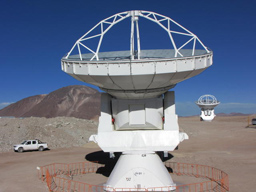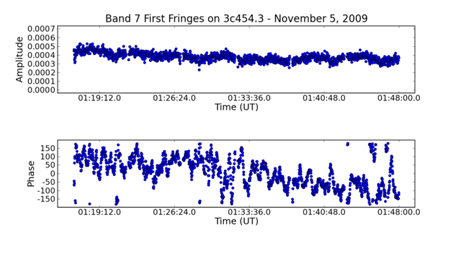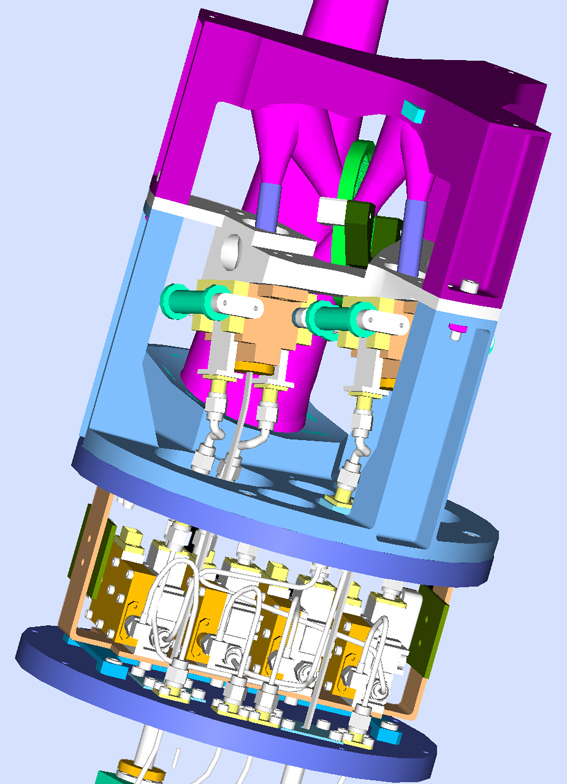News
IRAM scales new heights: At 5000 meters altitude, the institute's equipments capture first fringes at ALMA
|
|
| Copyright: ALMA (ESO/NAOJ/NRAO, Alvaro Quintana and Jose Olivares (ALMA) |
ALMA is a world-wide collaboration between North America, Europe and Eastern Asia and is the largest ground-based astronomical instrument currently in construction. In Europe, the ALMA project is funded and managed by ESO, the European Southern Observatory. With its highly recognized expertise, IRAM is one of the major partners in the construction of ALMA and is in charge of the development and production of several key elements of the instrument, such as the band 7 (275-373 GHz) receivers, the correlator digitizer clocks and the real-time calibration software (TelCal).
| Copyright: ALMA (ESO/NAOJ/NRAO) |
|
|
| Design of the ALMA Band 7 cartridge; Copyright: IRAM |
Another key element used to obtain the first ALMA fringes is the TelCal ("telescope calibration") software, which is performing the real-time calibration of the instrument, making sure the array is properly tuned and able to observe. TelCal is also pre-processing the incoming data and will, in the future, apply the real-time atmospheric correction. The expertise acquired with the Plateau de Bure interferometer has been widely used to develop this new software, which is written by a team of software engineers at IRAM.
Note also that the astronomers and engineers team that obtained the first ALMA fringes in Chile was led by Robert Lucas, who has spent more than 20 years at IRAM before joining the ALMA Commissioning team.
For more information about IRAM and ALMA click here:
For more information about ALMA:






